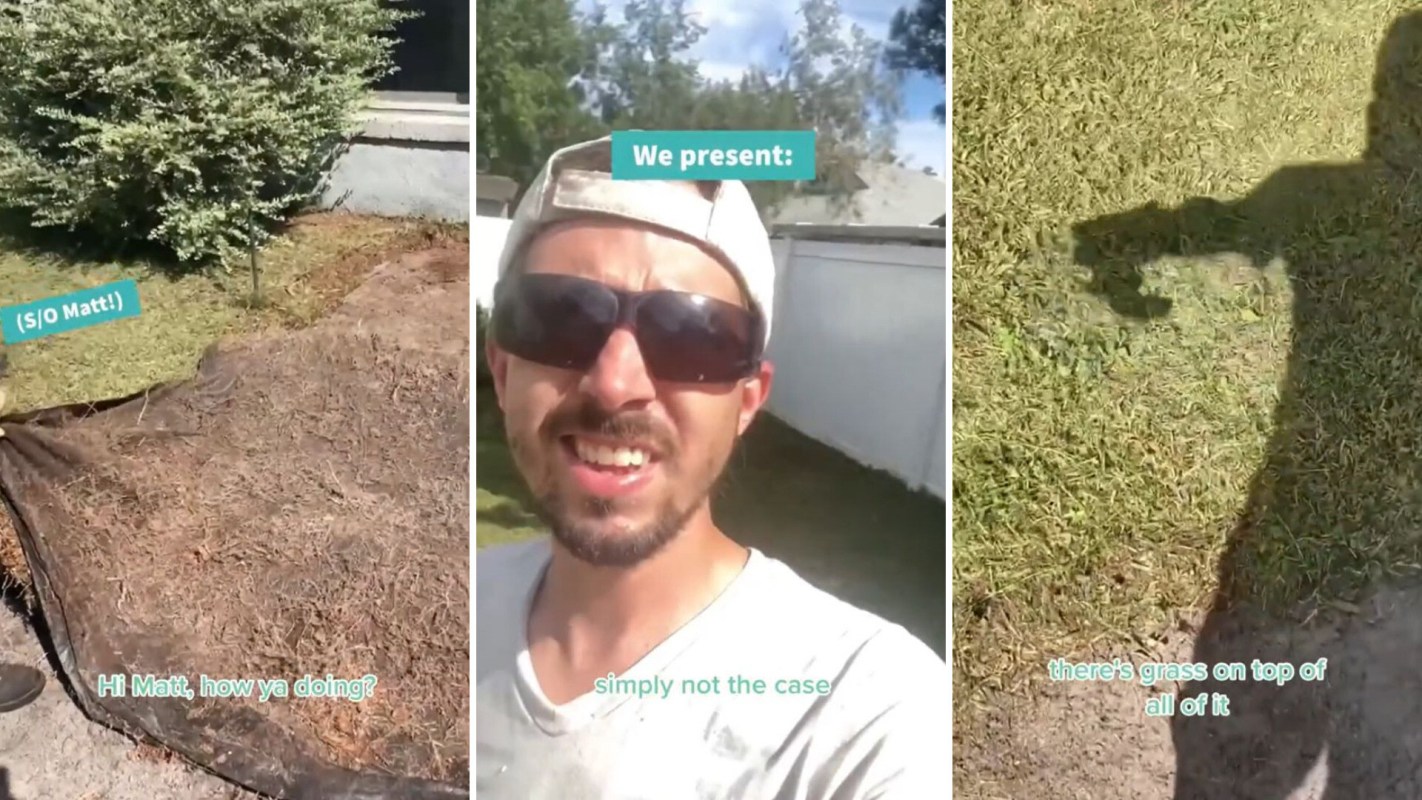If you've ever used weed liner to stop the spread of weeds in your garden and found the product doesn't deliver the desired results, you're not the first, and it's likely you won't be the last.
An expert landscaper has taken to TikTok to explain why the material's name might be a little misleading.
@connectedlandscapes One thing we commonly see is this fabric being used incorrectly- hereMs what 'Weed Liner' really is #landscaping #floridalandscaping #sustainablelandscaping ♬ original sound
The Connected Landscapes TikTok account posted a video while working in someone's yard. The whole area is covered in grass sitting atop weed liner fabric.
But when one of the workers pulls up the fabric, it's clear that the weeds are penetrating the fabric, and the roots are spreading.
And there is a fairly simple reason for that.
"This material wasn't meant to keep plants down," the video is captioned. "Weed liner is really the wrong name for it. … It's not for that and it won't do that," the TikToker said.
I'm confused about the weed liner concept...thought the goal was to prevent weeds and help reduce pesticide usage. 😡 pic.twitter.com/DX3vhyTTDD
— csheffield@nrcc (@supinncgolfccc) August 3, 2017
Otherwise known as geotextile landscape fabric, its main purpose is to "separate layers of gravel from soil."
The material acts as a barrier to prevent gravel from sinking into the soil. "It works great for doing that," the TikToker observed.
But, they added, "it does not stop vegetation." While weed liner might help slow the spread and rate of growth of weeds, it isn't meant to keep them out entirely.
People in agricultural or nursery settings might see different results, they indicated, but that's because they work the land on a regular basis to keep weeds from sprouting up. For residential users, however, it's not quite that easy. So the money spent on weed liner might be better used on other gardening solutions if you're looking to stop weeds.
@axeandroothomestead For years I have felt like I was pulling the same weeds over and over again in the exact same locations, in my garden pathways. Rye grass, crab grass, goldenrod. I would pull weeds for hours and two days later they'd be back. I used high-quality landscaping fabric and gravel in my pathways—and it was stunning and weed-free for a couple of months. Then it became a nightmare to keep weed-free. It was during a random conversation with a family member that I discovered the problem… landscaping fabric. I pulled it up and waited a month before creating and sharing this video to make sure this really worked. And it's been a complete game-changer. So if landscaping fabric is a no-go, what to use in the future? I'll be sticking with heavy-sheet-mulching with cardboard, compost and soil. This approach hasn't steered me wrong yet in creating growing spaces. In the future, I'll do the same on walkways, personally. #weedfree #naturalgardening #homestead #gardeningtip #gardeningtips ♬ original sound - Angela
"I came to find this out first hand," one user commented. "A buddy said use it [and] put mulch [on] and nothing will come through. Well within a month it was grown through."
But Connected Landscapes did offer a couple of solutions to prevent the growth of weeds in your garden.
"If we are adding sod we amend with compost, and if we are planting a bed, cardboard and mulch," they said for stopping the growth of weeds, adding that pine bark and pine straw is a great mulch to use in Florida specifically. Meanwhile, burlap is suggested as a good material to use for a liner.
Join our free newsletter for easy tips to save more, waste less, and help yourself while helping the planet.









